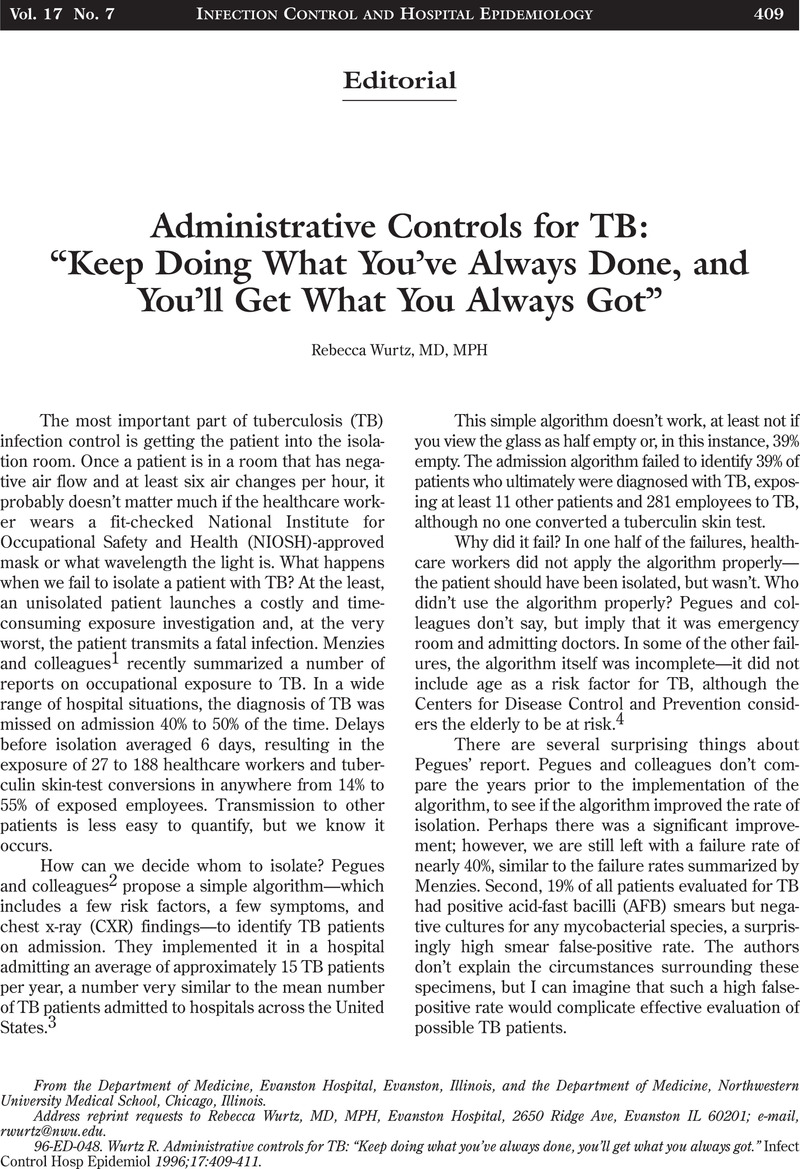3.
Fridkin, SK,
Manangan, L,
Bolyard, E, the Society for Healthcare Epidemiology of America,
Jarvis, WR.
SHEA-CDC TB survey, part I: status of TB infection control programs at member hospitals, 1989-1992.
Infect Control Hosp Epidemiol
1995;
16:
129–
134.
Google Scholar 